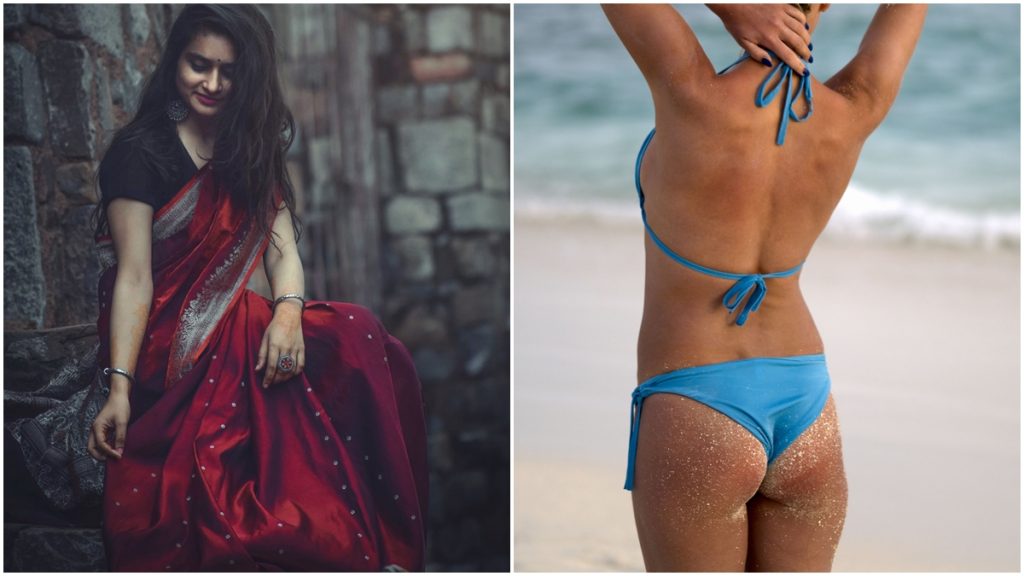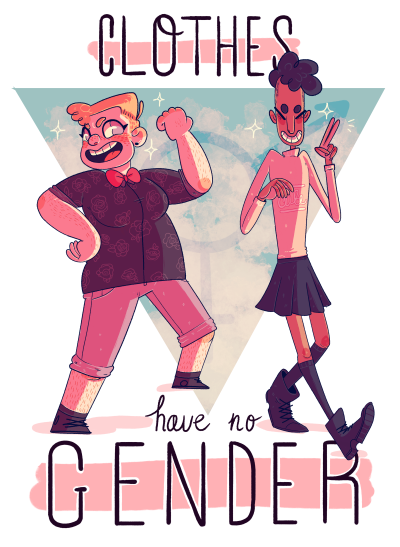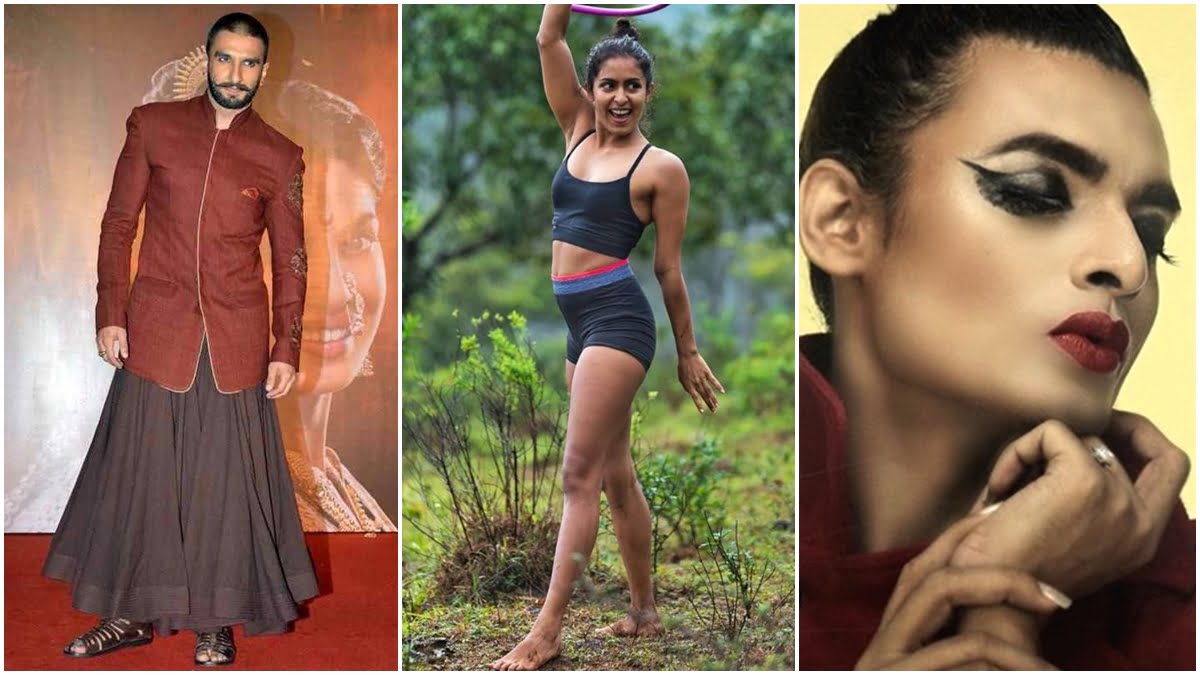“Pink look pretty,
When they are feathery skirts rolled around a girl’s waist
But, pink looks shitty
When boys wear them in taste.
Yes, we have waged and valiantly fought battles against gender inequality and the rigid imposed structures of gender binaries, yet, a quick look around is what we need to see how society thrives on gendered notions. Gendered clothing is among the most evident symbolifiers of the same.
Clothing is among the most evident signifiers of the regressive gender binaries imposed on a population, in addition to other aspects such as class, caste and even religion.
In such a scenario, am I allowed to think that the society I live in exists beyond its self-created duality? Am I allowed to learn the importance of accepting and normalising gender fluidity? Are we even allowed to think beyond the existing, socially constructed binaries anytime, for anything?
It is an old habit to genderise practically everything that exists. To assign a gender to anything and everything is the only tool by which the patriarchal society maintains its sustenance.
Also read: Samyuktha Hegde’s Moral Policing Case: Decoding The Gaze On Women’s Sports Bra
Stereotypical Understanding Of Clothes
Anything that restrains a particular section of the society from performing or embracing any activity is centered around ideas of autonomy and equity. A woman’s desire to dress up in any categories of clothing is shunned. The freedom to dress up in a way one associates with best is a matte of privilege. if one looks around, this privilege is seen best in what cis-gendered heterosexual men of the upper class can afford and choose to wear.
This is also a reading of the functioning of patriarchy in a manner of using tools that restrict marginalised sections, such as a person from an evidently lower class and caste background, a trans woman who wants to wear clothing that helps her embrace her femininity better or a cis-hetero woman who wants to wear a short skirt but the society will deem her ‘wayward’ for doing so.
The clothes we wear have the politics of gender, privilege and class associated with it and when our agency is denied by social structures, customs and deeply entrenched class hierarchies, it is our autonomy over our body that is denied.
The idea of autonomy is furthered with the help of the stereotypical understanding of clothes. The strict and the ideal way of clothing, as prescribed by the constitution of patriarchy is seen as the only way. One, who dares to defy the norms, is villainised if not reduced to a caricature.
A cis-gendered woman has to be signified by how calm, obedient and silent she is. Her clothes are among the primary signifiers of these attributes. They are the parameters on the basis of which your femininity, an abstract entity, is measured. The one who dresses up bold, flaunting her cleavage is adorned with labels such as slut, whore, attention-seeking b***h.

A girl who likes to dress up in a loose shirt, regular loose fit jeans and keep short hair is seen as someone who has no feminine quality or a “tom-boy”. The underlying idea here is she tries to appropriate the way a boy dresses and her identity is elevated by using the term “tom-boy” and she lacks femininity. She isn’t seen as a girl who is different and has independent choice.
It’s not just the stereotypes that are circled around the idea of clothing, the way clothes speak are also hypocritical.
“There’s still this constrictive element to clothing and (its) relation to “passing” in the big scary world. I have always drooled over certain looks that, in my current state of transition, I feel like I can’t wear. Even the simplest of short tees and low jeans showing my new hairy snail trail. I find myself in this complete perplexing state of wanting to celebrate the changes of my body, the flatness of my bound chest and my slightly broader shoulders, but also having to acknowledge that how I dress is often a signifier of my trans identity, and to ensure my safety.”
This is what Kar Isaiah Jamal, a queer and trans person of colour told CNN describing how the way the look and dress up make them feel about their gender.
Alas, the freedom to set fashion trends and choose what to wear is only available to the privileged members of the society. While, on one hand Ranveer Singh’s androgynous fashion sense is glorified as trend-setting and quirky, a queer person will be shunned for the way they have chosen to express themselves. for his taste in fashion.
Shefali Vaidya, a right-wing activist shared the photo of Kaushal Bodhwal, a JNU scholar participating in the anti-CAA protests in Delhi wearing a bindi and a nose-ring, with a queerphobic caption which unpacked an army of trolls on Bodhwal.
When it comes to the practices of cross-dressing and trans vestism, these are now increasingly seen as deviant and an illness that demands a cure. However, speaking to Indian Express, late designer Wendell Rodricks had said that androgynous dressing and softer silhouettes are rooted in Indian history. For instance, men wearing surma (kajal), lungis, angrakhas, churidars etc., are common sights in India, especially in the rural regions.
This is why it is important to understand how clothes, as of now, speak the restrictive language of the society. This gendering gives tongue to the clothes in the closet to reaffirm the socially constructed adjectives like decent/indecent, moral/immoral, normal/abnormal. However, the ability to assign a language to the clothes is not just the exclusive domain of the conservatives.

Also read: Gendering Kids Clothing: More Than Just A Colour War
Clothing is an arena for rebellion. The dresses of a cisgendered woman on the basis of which a society deems her “slutty” are the same dresses a woman wears to challenge patriarchy. The clothing that invites ridicule for trans persons is the same that solidifies the identity they relate with best.
Clothing is an arena for rebellion. The dresses of a cisgendered woman on the basis of which a society deems her “slutty” are the same dresses a woman wears to challenge patriarchy. The clothing that invites ridicule for trans persons are often the same that solidifies the identity they relate with best.
Clothes speak the language of progress and choice. Clothes speak the language of rebellion. Clothes speak the language of power, of freedom, of independence. They are no more restricted within the frivolous non-existing binaries. When sex and gender don’t form perfectly binaries, then how could clothes?
About the author(s)
An opinionated girl sitting on the window fences, contemplating the metaphorical tones concealed under those clouds while Alexa plays 'Kho gaye hum kahan'.




